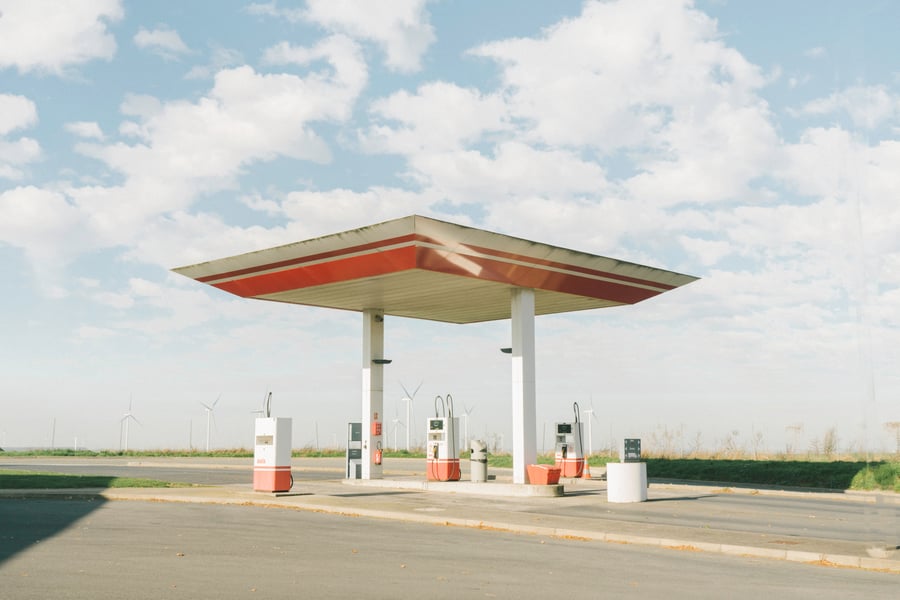
C-Store and gas station owners understand that high-quality signage is integral to the success of their business.
NACS, the leading global trade association dedicated to advancing convenience and fuel retailing, says that key drivers for consumers are brand, fuel prices, and in-store amenities which means that signage and sign visibility continue to play a key role in a competitive market with low margins.
It is important that c-sore and gas station owners put themselves in their customers' shoes – and in their drivers and passengers’ seats! – and do an audit of their business signage.
Conducting a Business Signage Audit
Conducting a business store audit requires a thorough understanding of your customer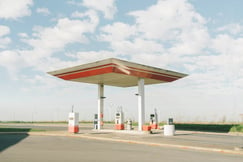 base. Asking yourself such questions as:
base. Asking yourself such questions as:
- How much of your c-store or gas station traffic is on foot or other non-motor transportation and what direction do they travel?
- How much of your c-store or gas station traffic is by vehicle and what percentage are solo drivers and what percentage have passengers?
- What direction does the vehicle traffic flow to and from your location and from what nearby roads is your business signage visible from?
Remember that a business signage audit includes all your signage, inside and outside your location, not just your main brand and gas price signage.
“The role of signage does not stop once a customer is attracted to the location, but on-site smaller signage is key to getting customers to come into the store,” said Wolfgang Manz, President & CEO, PWM Electronic Price Signs. “It’s no secret that with low margins at the pump, retailers that want to turn a healthy profit, need customers to make purchases inside their stores.”
Looking at Your Business Signage from a Fresh Perspective
When you audit your business signage it helps to have a fresh perspective.
An owner simply walking around the property inspecting signage they were responsible for acquiring and installing will not bring the same opinions as others might have about the signage.
For a business signage audit to work, try covering all these bases:
- Approach your location on both foot and by vehicle, noting signage.
- Have more than one set of eyes view the signage, especially noting that seniors or older patrons may view signage differently than younger customers.
- View your signage at different hours of the day, obviously signage at night will look much differently than in the daylight.
Keep detailed notes of your business signage audit and do the audit on a periodic basis, comparing notes from previous audits.
Pay particular attention to the age and condition of your signage which should allow you to plan for future capital expenditures to update signage as needed.
“Keeping your signage in good condition will help make sure your messages stand out in a crowded marketplace” said Manz.
6 Things to Look for During Your Business Signage Audit
When it comes to your business signage, both your long-term location and branding signs, and your short-term interchangeable promotional signs, you need to look at six key areas during an audit:
- Branding: It is important that all your signage is consistent with your businesses branding. NACS found that brand loyalty has almost doubled among drivers in six years, making signs important as they establish brand identity and capture traffic looking for a specific retailer. If your branding does change, you will need to update all signage to reflect the new identity.
- Compliance: Make sure that all your signage is compliant with applicable local, state, and federal laws and regulations. Are your business signs compliant with the Americans with Disabilities Act (ADA)? ADA-compliant signs may mean such things as mounting signage at a certain height, so the horizontal distance is the same for a person in a wheelchair. Do you have certain signs in Braille for sight-impaired patrons? Non-compliance could cost your business with fines and lawsuits possible.
- Visibility: A sign without visibility is a poor investment. Your signs should be visible from a proper distance in both day and night and in all directions. Considering using newer LED signage when swapping out older fluorescent and incandescent signage. LED lighting is longer lasting, costs less, environmentally friendly and, best of all, more visible.
- Good Repair: In a perfect world, all your signage would be brand new all the time, but that would not be cost effective. It is important, however, that your current signage is in good condition and does not need repair. First impressions count and damaged or poor-looking signage sends the wrong message about your establishment.
- Current: Promotions, goods, and services are constantly changing and so should your signage. Make sure your signs are current. Do you have signage that addresses current COVID-19 protocols and solutions? Is your location, for example, adding fast charging stations for electric vehicles? If so, then you will need new signage to inform customers of your changes. Signs should feature the latest sales and marketing campaigns for your business and brand. It is also just as important to take down signs when promotions end or else risk alienating customers over unfilled promises.
- Opportunities: Make sure your signage is in all relevant locations and covers all the opportunities your business offers customers. Gas pump marketing, for example, can drive sales from the forecourt into the store. Today’s c-store offer so much more than just gas, so make sure your signage reflects that.
PWM understands that C-Store signage is an important marketing tool. Contact us today to find out how your store can draw more traffic with our cutting-edge surface-mounted device LED technology.


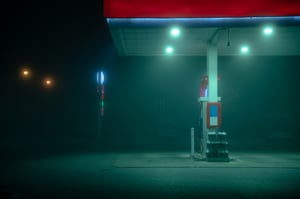

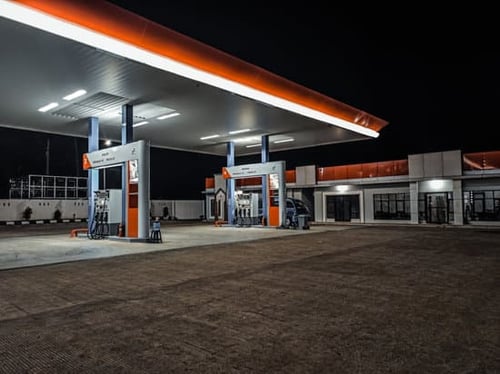
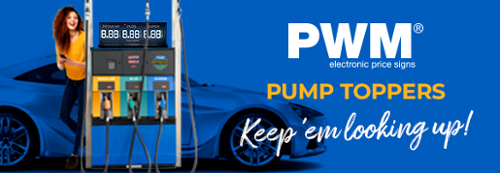
.webp?width=500&name=tl(15).webp)